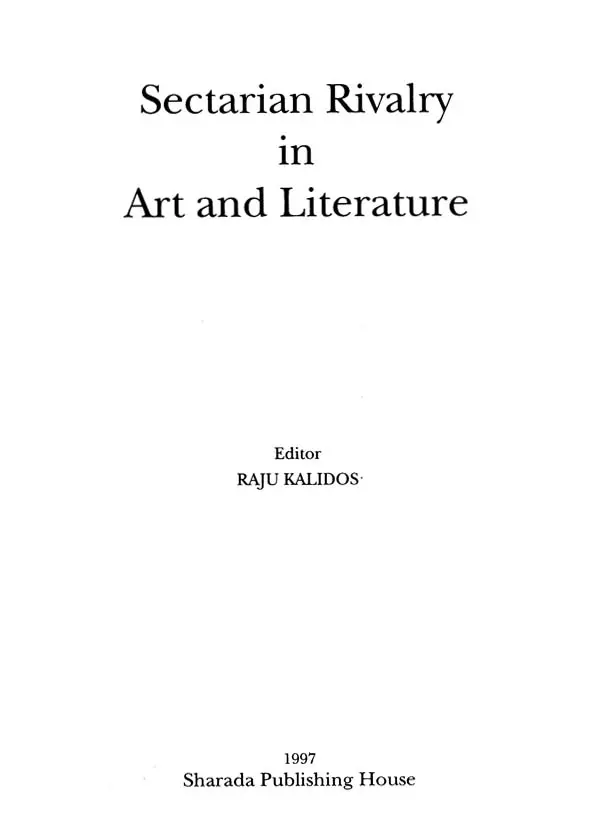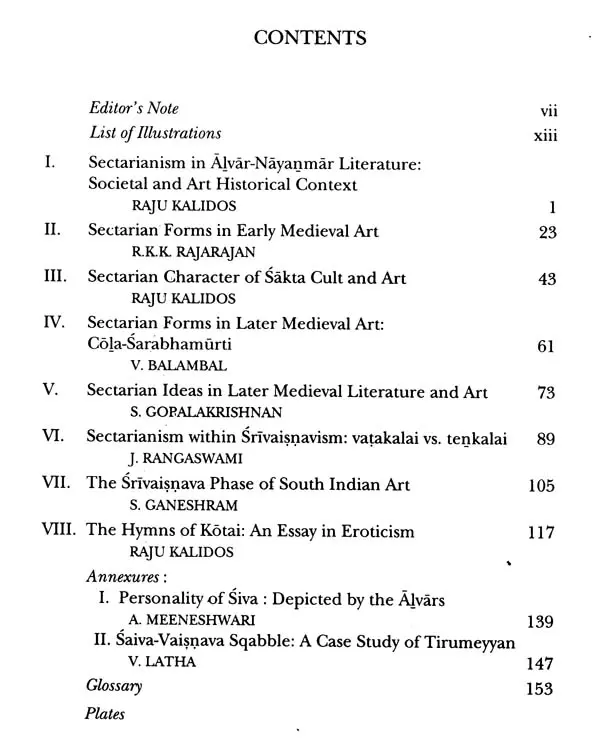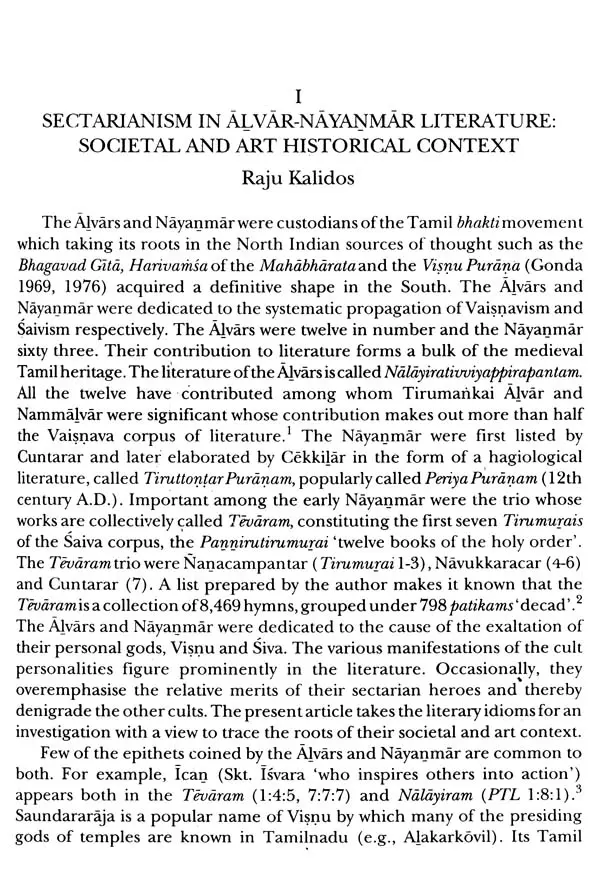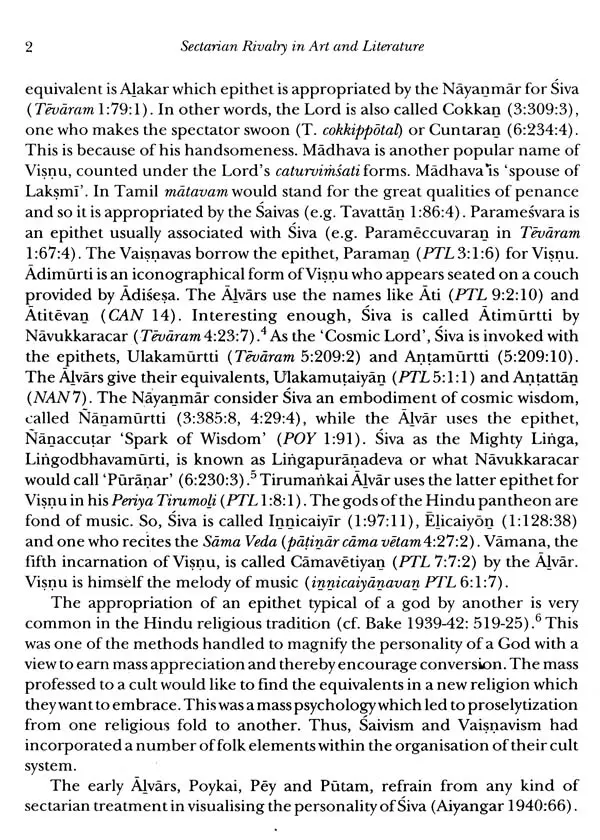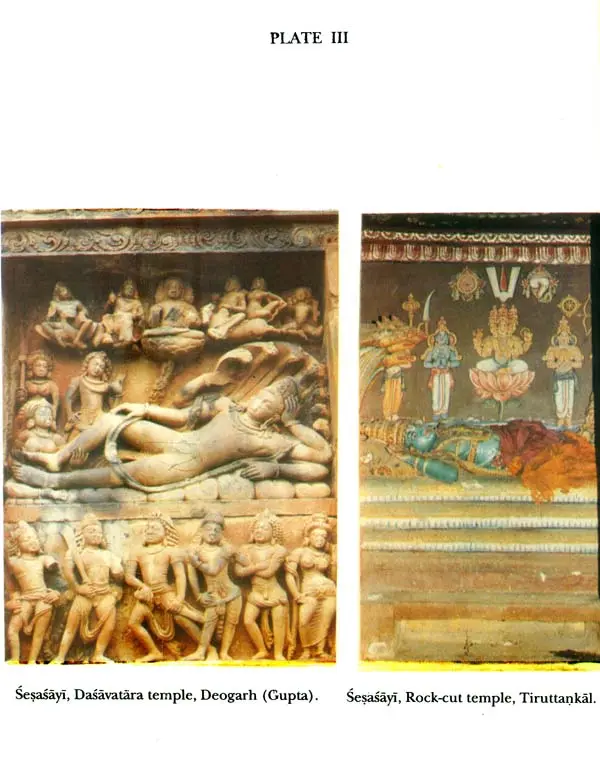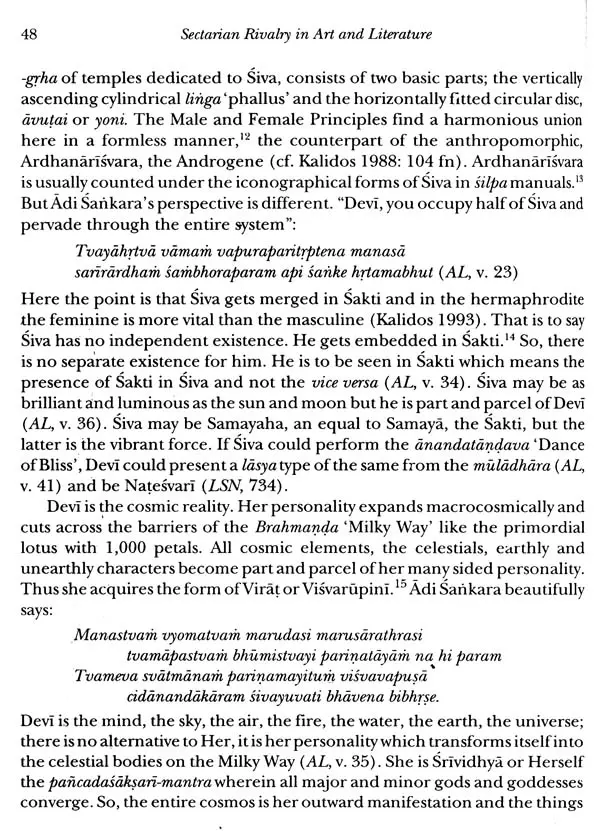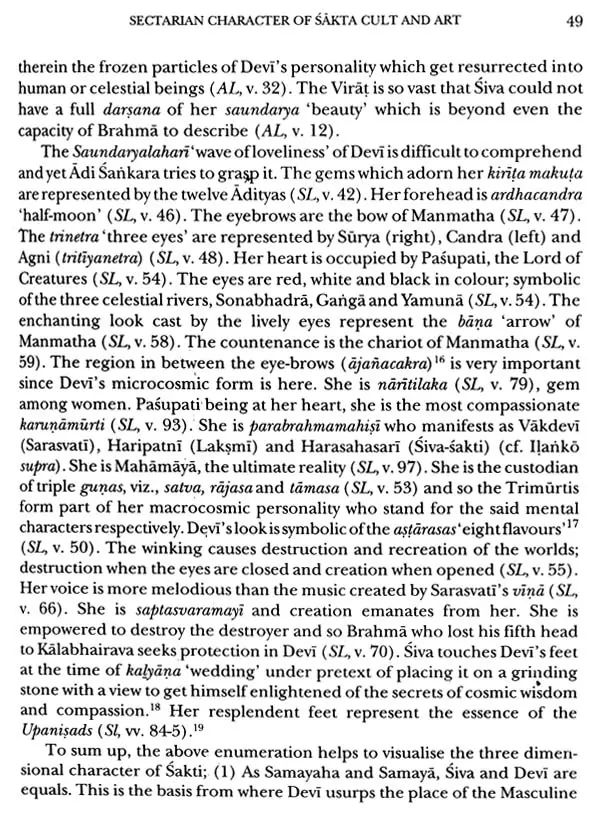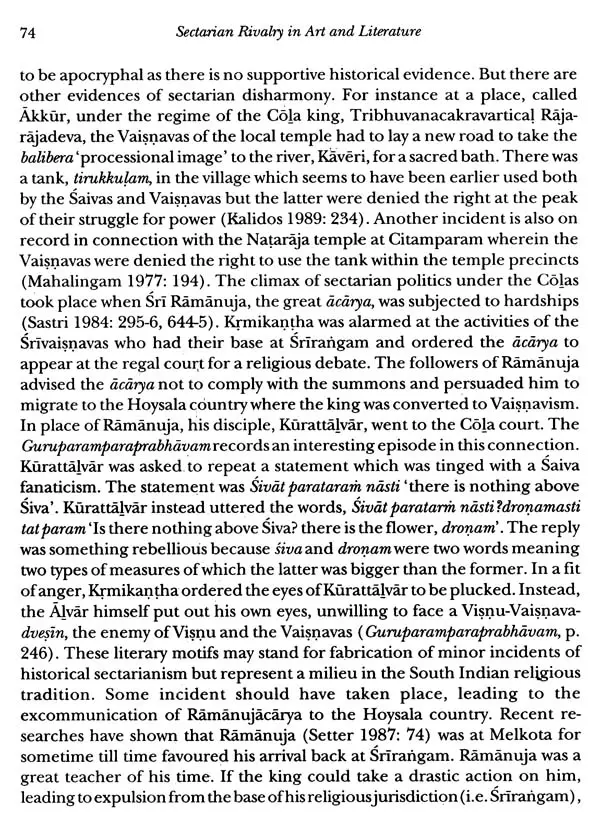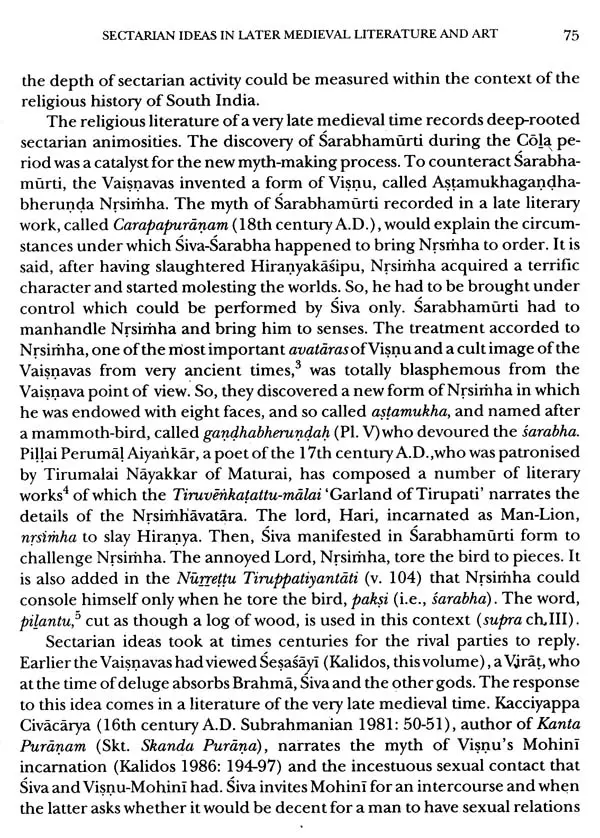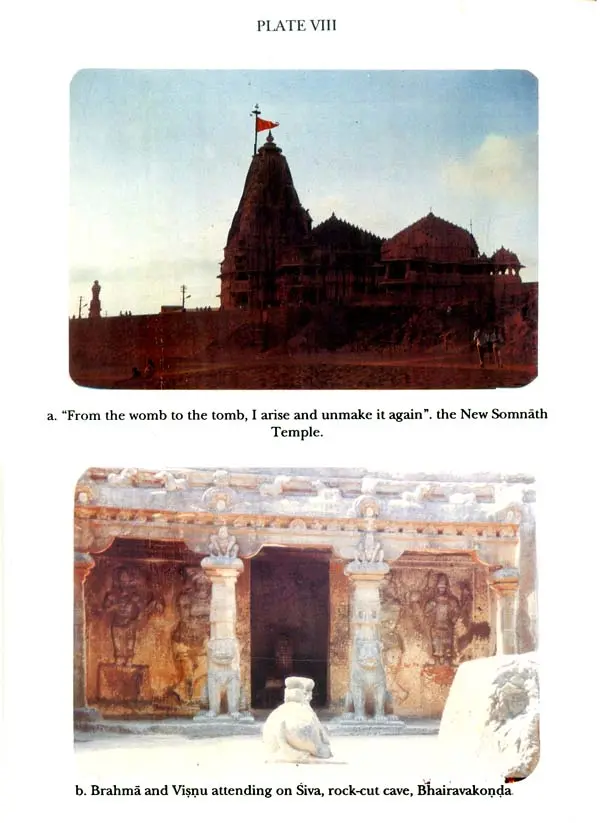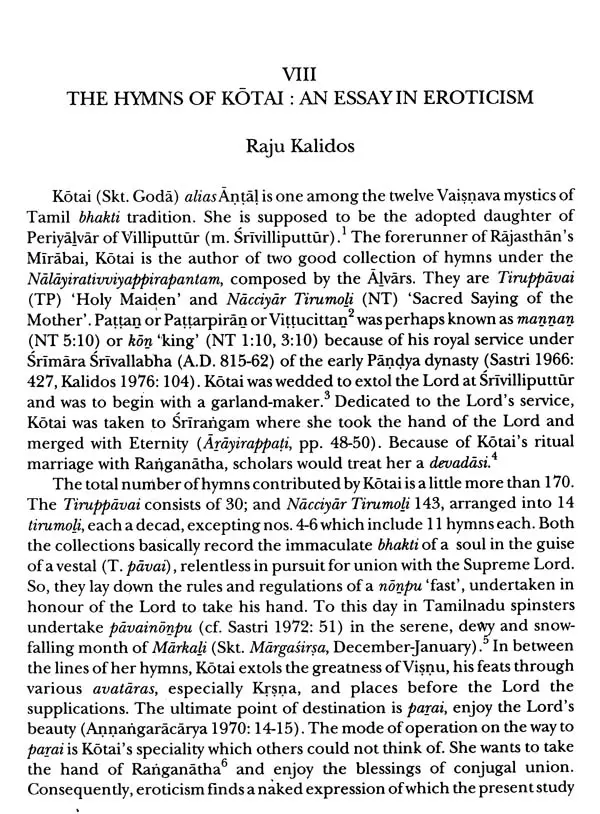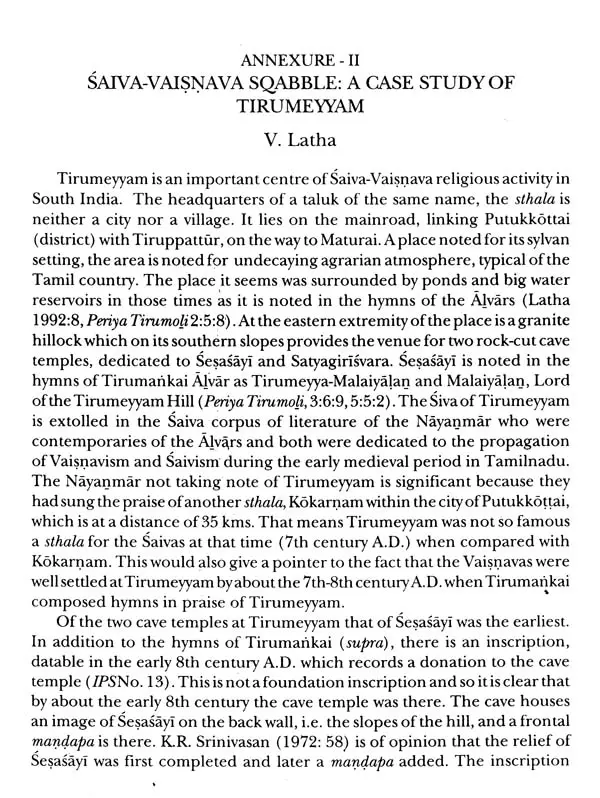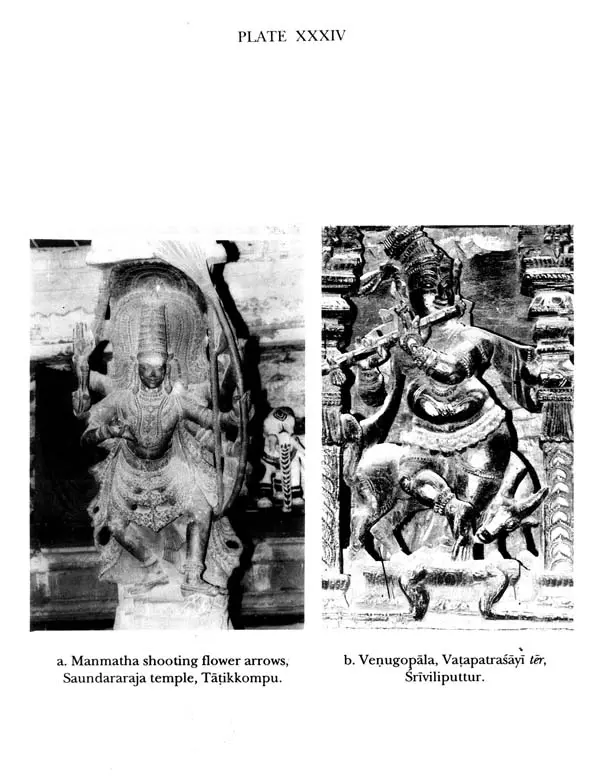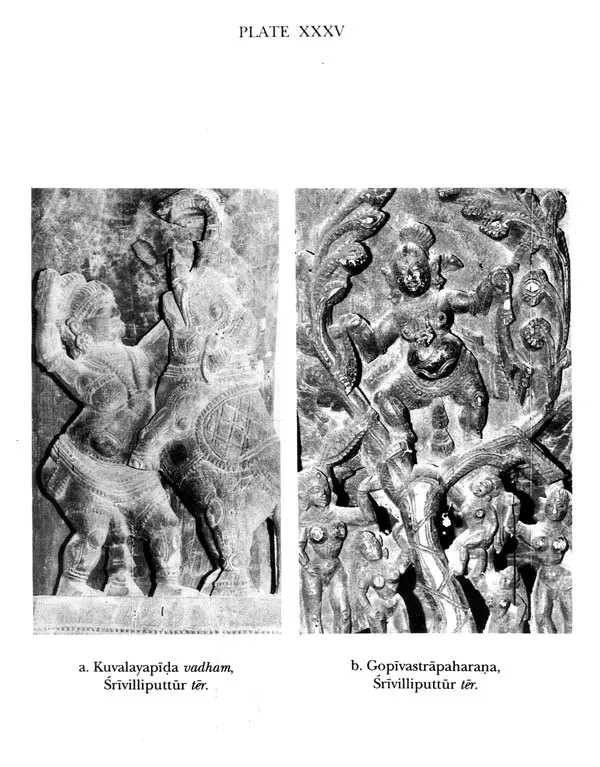
Sectarian Rivalry in Art and Literature
Book Specification
| Item Code: | UAG267 |
| Author: | Raju Kalidos |
| Publisher: | Sharada Publishing House, Delhi |
| Language: | English |
| Edition: | 1997 |
| ISBN: | 8185616485 |
| Pages: | 204 (Throughout B/w and Color Illustrations) |
| Cover: | HARDCOVER |
| Other Details | 10.00 X 7.50 inch |
| Weight | 670 gm |
Book Description
Down to A.D. 550 Buddhism and Jainism dominated the helm of affairs in the South. The Alvars and Nayanmar, heralds of a renaissance in religious matters, systematically propagated the cults of'Visnu and Siva. The Bhagavata movement of the North was the root of this neo-scenario. By about A.D. 700 the march of heterodox cal sects was checked. The bhakti-based sects, having set their foot strongly, started abusing mutually in an effort to muster mass following. The disputes were mostly in the form of philosophical arguments, barring exceptional cases of violent clashes. Definitely there was no armed belligerency as it took place in' the West (e.g., the Crusades and 100 Years War). Nor did they follow the jihads of Arab-Turkish iconoclasts who destroyed temples and erected minars. The 1 Saiva-Vaisnava joined by Sak.la and others, clashes were of the cold war type and had a tremendous impact on the iconographical developments of the medieval period. The grim effects of sectarianism may be discerned in the plastic and pictoral arts of which a number of samples are enumerated- and illustrated. These are backed by the literature of the age, especially the hagiological works and hymns of the bhakti savants.
A group of eight authors under inspiration of the editor have taken the commendable effort to delve deep into the problem. This is a norm -setting area in art historical research.
Publication in Journals of national level touch a centum. The associates of Raju Kalidos are equally meritorious, all having contributed/ published in the international Journals. They are R.K.K. Rajarajan, S. Gopalakrishnan, V. Latha and A. Meeneshwari. J. Rangasvami is Reader in the Department of Philosophy of the Tamil University. S. Ganeshram is Lecturer in the S.R. Naidu College, Sattur. Both of them are associated with the Editor in research projects for a pretty long time.
V. Balambal was Professor of History in the University of Madras.
A major UGG project, completed by Raju Kalidos on the Iconography of Early Medieval South India is being published by the Sharada Publishing House in five volumes.
Book's Contents and Sample Pages
